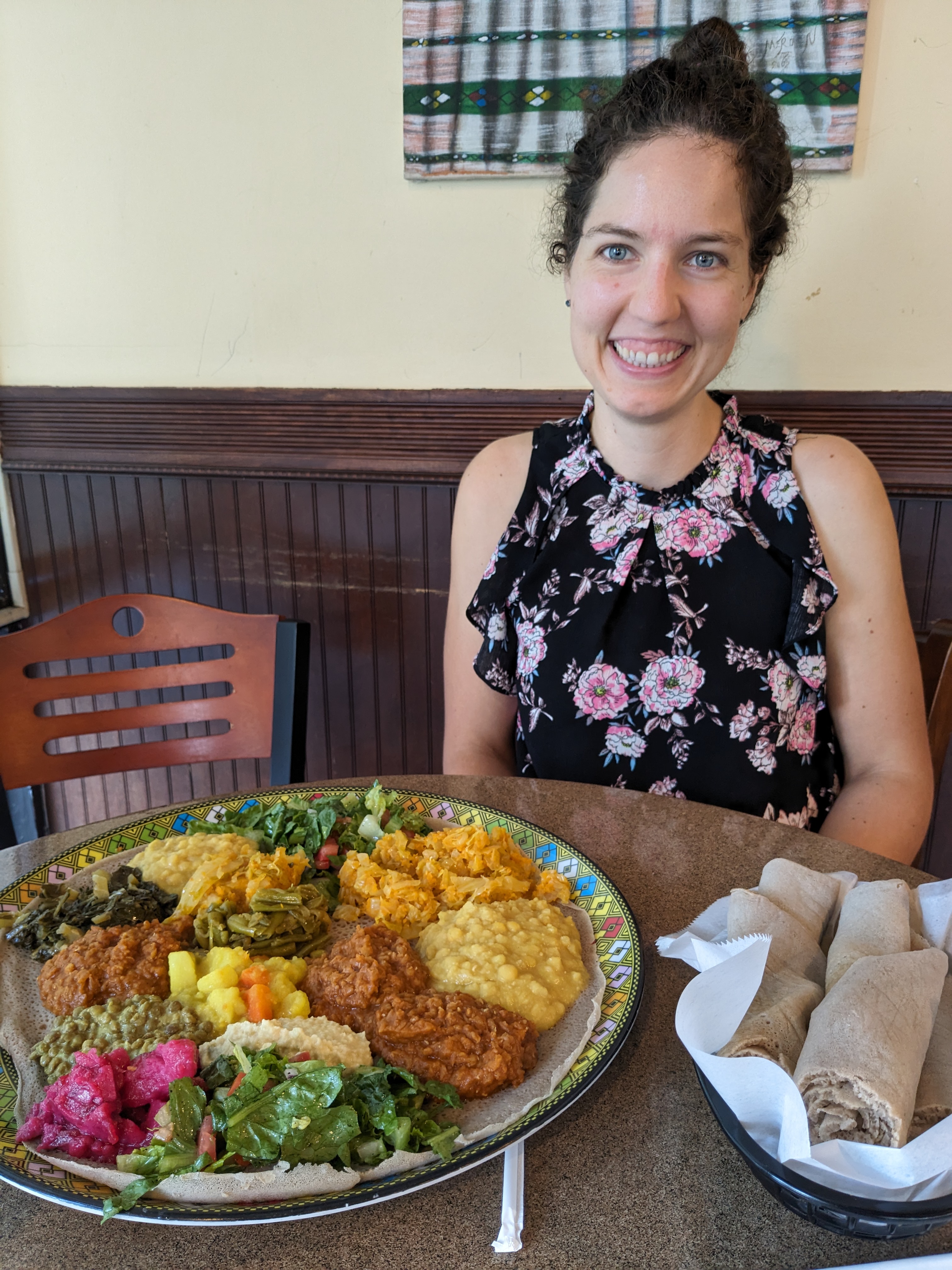Valerie Wray

Research Area: Computational Genomics, Phylogenetics
Undergraduate Institute: Truman State University
Hometown: St. Louis, MO
Why did you choose AMSC?
I chose AMSC because I wanted to be in a program where I could explore various interests in applied math, pure math, computer science, and statistics. The flexibility of the AMSC program was very appealing to me. AMSC students can take courses across all areas of mathematics and statistics in the Math Department, as well as courses in various other disciplines including computer science, fluid dynamics, engineering, business, and more. The AMSC program has a huge degree of flexibility in coursework and in research options. UMD’s large size means there are a lot of faculty working on different kinds of cutting-edge problems. I knew that no matter what kind of research I wanted to do, there would be something for me at UMD. I also liked the idea of being close to Washington, DC, for potential internship opportunities and weekend entertainment.

What are your research interests and why? How did you discover this interest?
I discovered my interest in computational genomics after taking a course in this area offered by the Computer Science Department. My research uses phylogenetic and statistical methods to estimate human ancestral recombination graphs (ARGs) with applications to identify disease susceptibility. I enjoy applying graph theory, statistics, combinatorics, and machine learning toward impactful problems in population health and disease prevention.
What do you do in your free time to keep a work/life balance during graduate school?
I enjoy bike commuting and going for long bike rides into DC on the weekends. I completed the C&O Canal Trail, a 184-mile towpath from Cumberland, MD, to Georgetown, DC. I also enjoy hiking, cooking vegan food, playing piano, reading books, and playing board games with friends.
What advice would you give to incoming students?
Get to know other grad students and form study groups to work on homework problems and prepare for exams together, and don’t be afraid to ask questions in class or during office hours. Reach out to professors you are interested in working with to meet with them to talk about their research – most would be happy to talk with grad students and can help you find a direction for research, even if they don’t have a spot for you.
What keeps you motivated in the AMSC program?
The collaborative environment and the connections I have made with other grad students and people in the Math Department are a big part of keeping me going. Everyone is super supportive of each other, and I can always find a friendly face in the math grad lounge.
What are your goals after graduation?
My future career goals include working at an organization centered around human health like the NIH. My goal is to contribute to the field of computational biology with methods and results that have the potential to improve human health. I have a summer internship at the NIH that will give me experience in using cutting-edge technologies and tools for long read sequencing data and will give me access to and understanding of the current problems faced by computational biologists. At UMD, my proximity to the NIH will allow me to continue these collaborations throughout my graduate career and beyond.
